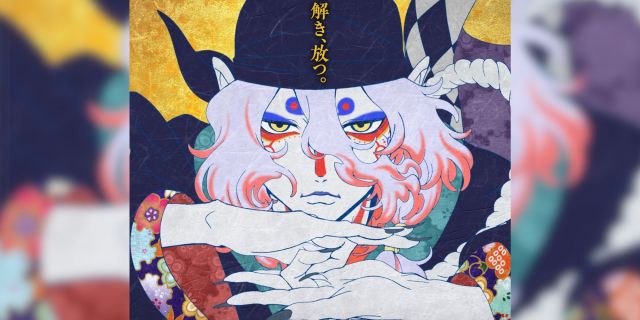Highlights
- Dive into the haunting world of Mononoke with the long-awaited film continuation, Karakasa, exploring complex women and supernatural spirits.
- Director Kenji Nakamura brings his bold vision to the big screen with Karakasa, promising breathtaking visuals and powerful storytelling.
- Mark your calendars for July 26, 2024, to witness the mesmerizing and psychedelic Mononoke Movie: Karakasa in Japanese theaters.
|
Title |
Mononoke Movie: Karakasa |
|
Director |
Kenji Nakamura |
|
Studio |
EOTA |
|
Release Date |
7/26/2024 |
Kenji Nakamura’s Mononoke – a supernatural series equal parts beautiful and unsettling – is possibly one of the greatest anime of the 2000s and an aesthetic high point in Toei Animation’s long history. Yet, whether one has seen it and relished its oddities, or not, its long-awaited film continuation, Mononoke: Karakasa, is one that all lovers of animation need to keep an eye on.
Mononoke began as the final story of the 2006 anthology series Ayakashi: Japanese Classic Horror, before being spun off into its own original series a year later, both directed by Nakamura. The story tells of a mysterious man known as the Medicine Seller, who hunts malevolent spirits known as “mononoke” by discerning their shape, truth, and reason.
Understanding Mononoke (And the New Movie)

The original series is often billed as a horror series, and though its imagery and especially its sound design can be quite eerie, it is more accurate to call the show haunting than outright scary. In many ways, it’s a mystery in which the ever-stoic Medicine Seller discerns the aforementioned three elements of a mononoke to exorcise them. There are five stories told over 12 episodes, each with a radically different setting, cast, and supernatural threat, but always a common theme.
Given that the mononoke cannot be exorcised without discerning its reason for being, the story always prioritizes exploring the pain associated with the person the spirit once was. What makes Mononoke fascinating is how women are central to each story in this way. The series explores not only the injustices done to women but also observes how such cruelties go uncriticized by society, even as generations pass, a point hammered home with horrifying efficiency.
The Story of Karakasa
Continuing the series trend of exploring the suffering of complex women through abstract art and horror, Karakasa takes place within the Ōoku (大奥, “great interior”) of Edo Castle. The word refers to the living quarters of the harem of the reigning shogun – a place where men are forbidden to enter. Karakasa itself refers to both a paper umbrella and a mythical creature known as the Karakasa-kozo, or umbrella ghost.
A doctor such as the Medicine Seller would likely be permitted to enter the Ōoku, but the affliction he aims to eliminate is no illness. Within the harem, the grudges, resentments, and heartbreak of the women are preyed upon by a powerful spirit. The women of the Ōoku have to sacrifice their feelings to perform their roles, abandoning things precious to them; things which the Medicine Seller must discern to stop the mononoke.
The Staff Behind Karakasa

It wouldn’t be Mononoke without Kenji Nakamura directing, and even with the transition from Toei Animation to EOTA, this film still looks as bold and breathtaking as the series before it. The color designer, Kunio Tsujita, has previously worked on Vivy: Fluorite Eye’s Song, Sarazanmai, Mawaru Penguindrum, and similarly pretty projects. If anything, it looks a bit cleaner than the TV series, which is to be expected of a production for the big screen.
The character designs might be the biggest departure from the original. Mononoke was gorgeous, but its character designs by animator Takashi Hashimoto were certainly odd-looking, though this could add a certain charm. By comparison, there’s an off-kilter quality that is absent in the film’s designs by Kitsuneko Nagata and animation director Yuuichi Takahashi.

Regardless, the designs look great, and it’s no surprise given Takahashi’s previous work on Blue Giant, Vivy, Gatchaman Crowds, and Tsuritama, the latter two of which were directed by Nakamura. One of the most exciting staff credits is returning sound director Yukio Nagasaki, whose soundscape for the original series was exceptional. Nagasaki also worked on Gatchaman Crowds, Tsuritama, Blood: The Last Vampire, and Bleach: Thousand-Year Blood War.
Taku Iwasaki, the legendary composer behind Gurren Lagann, Soul Eater, The Irregular at Magic High School, Gachaman Crowds, Bungo Stray Dogs, and much more, will score the film. The film’s main theme, featured in the trailer linked above, will be performed by AiNA THE END, and is titled “Love Sick”.
The Main Voice Actor
Originally, the Mononoke movie was supposed to come out in 2023 but was delayed on account of the recasting of the lead. In the original series and Ayakashi before it, the Medicine Seller was voiced by Takahiro Sakurai (Suguru Getou in Jujutsu Kaisen, Reigen in Mob Psycho 100). In early 2023, after it was revealed that Sakurai had been involved in a 10-year extramarital affair, Producer Twin Engine announced that the film would be delayed.
Given the story’s content and themes, the production committee deemed it inappropriate for Sakurai to represent the Medicine Seller and announced he would no longer be reprising the role. Instead, Hiroshi Kamiya, known for his portrayal of Koyomi Araragi from the Monogatari Series, would later be revealed as the new voice of the Medicine Seller.
A Must-Watch for Summer 2024?
Mononoke Movie: Karakasa will be released in Japanese theaters on July 26, 2024. As of the time of writing, there is no word of an international release, but it is certainly worth keeping an eye on it in case one is announced. From its mesmeric and often psychedelic imagery to its powerful themes and character writing, it is a story that is begging to be seen on the big screen.
Mononoke (2007) is available to stream on Netflix.
Sources: Anime News Network (Link 1) (Link 2)











Leave a Reply